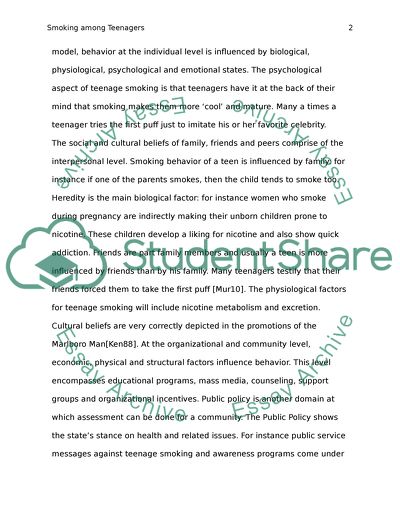Cite this document
(“Smoking among Teenagers Research Paper Example | Topics and Well Written Essays - 2000 words”, n.d.)
Retrieved de https://studentshare.org/nursing/1443171-communityhealth-issue-teen-smoking
Retrieved de https://studentshare.org/nursing/1443171-communityhealth-issue-teen-smoking
(Smoking Among Teenagers Research Paper Example | Topics and Well Written Essays - 2000 Words)
https://studentshare.org/nursing/1443171-communityhealth-issue-teen-smoking.
https://studentshare.org/nursing/1443171-communityhealth-issue-teen-smoking.
“Smoking Among Teenagers Research Paper Example | Topics and Well Written Essays - 2000 Words”, n.d. https://studentshare.org/nursing/1443171-communityhealth-issue-teen-smoking.


